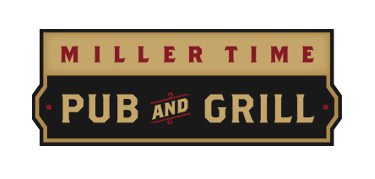
The cover of the first issue of “Wisconsin Sportsvue†Magazine
After the 1983 season proved to be a huge letdown for the Brewers, 1984 was seen as a year of possibility. For the first time in a half-decade, an influx of young talent mixed the club’s established veterans. Team officials saw the season as a potential bridge between the late ’70s/early ’80s powerhouses and a new brand of winning ball that would carry the team through the rest of the decade. With returning stars like Paul Molitor, Robin Yount and Cecil Cooper came young prospects like Dion James, Randy Ready and Bill Schroeder.
But the Brewers needed a winning team for more than just team pride. The small-market franchise had spent liberally on players over the past decade and the financial realities of the game were catching up with them. Team president Bud Selig would spend most of the next 12-plus years emphasizing the plight of small-market clubs, but in 1984, a plan of his was finally coming to fruition that – he hoped – could helped his Brewers remain competitive. Seeing the revenues being made by the three major “superstations” (WTBS in Atlanta, WGN in Chicago and WOR in New York) that broadcast Braves, Cubs and Mets baseball over-the-air to homes far beyond their marketplaces, Selig wanted to maximize the earning potential for Brewers broadcasts. Selig and the Brewers teamed with the Milwaukee Bucks, who despite their run of success were even more cash-strapped than the Brewers, and laid out a vision for subscription cable television network that would carry team games and provide financial security to Milwaukee’s two big league franchises.
![]() Stay on top of the news of the day
Stay on top of the news of the day
Subscribe to our free, daily e-newsletter to get Milwaukee's latest local news, restaurants, music, arts and entertainment and events delivered right to your inbox every weekday, plus a bonus Week in Review email on Saturdays.
Originally dubbed “The Wisconsin Sports Network,” the channel was branded as “Sportsvue” for its 1984 rollout. A flashy print and TV ad campaign featured Brewers and Bucks stars and promised that “for less than 50 cents a game, the Sportsvue Cable Network turns your chair into the best seat in the house for Wisconsin sports.” In addition to the Brewers and Bucks (both of whom offered about half their games on Sportsvue), the network promised Wisconsin Badgers basketball, football and hockey; Marquette basketball; Admirals hockey; and a slate of non-Milwaukee MLB and NBA matchups. In February, 1984 – two months ahead of the channel’s launch – Wisconsin Sportsvue Magazine was launched. The premier cover featured Selig and Bucks owner Jim Fitzgerald grinning and leaning on a television set. Sportsvue was promised as the way of the future for state sports.
By the time of the station’s launch, agreements had been reached with about half of the cable providers in the state, covering about 220,000 of the Wisconsin homes that were wired for cable. Not included in this was the city of Milwaukee itself, which would not be cable-ready until 1986. All involved knew it would be a few years – at best – before the station would start making money. Selig and company estimated that that the channel needed 45-55,000 subscribers to break even and set a goal of 30,000 subscribers by the end of the year. But when the station went live on April 3, 1984, carrying a broadcast of the Brewers opening the season in Oakland, there were only about 4,000 homes in the state paying the $8-10 monthly fee to receive Sportsvue. The Brewers led the game going into the 9th inning, but a meltdown by Rollie Fingers (back from a year and half absence due to injuries) led to a four-run rally by the A’s, who won the game 6-5. It was sign of things to come for both the 1984 Brewers and Sportsvue.
Even with the Brewers in the midst of a terrible season, and other broadcasting on the channel being less frequent than advertised, Sportsvue steadily gained customers throughout 1984. But the channel’s growth was far behind what was expected. By the end of the year, with the Bucks on their way to a sixth straight division title, only about 16,000 homes subscribed to the channel and Sportvue announced that it was cutting its staff by one-third and ceasing publication of their monthly magazine. A few weeks later, it was announced that the station would officially fold after broadcasting the February 2 Bucks and Trailblazers game. The Bucks won that night, 105-95. It was their 11th straight victory.
In the aftermath of Sportsvue’s collapse, Fitzgerald announced he was putting the Bucks up for sale and rumors abound that the team would leave Milwaukee. It was estimated that the Bucks and Brewers lost a total of over $2 million on the ten-month venture. The franchise was only saved when Herb Kohl bought the team and the city was gifted the Bradley Center.
Selig blamed the big-market clubs and superstations for aiding in the channel’s demise, citing their impact as “devastating.” Following the 1985 season, Selig and his fellow owners would engage in an organized system of refusing to sign free agent players in an attempt to drive down salaries. To Selig, it was another attempt to salvage small-market baseball. To the federal government, it was an illegal form of collusion. The hefty fines levied against the owners in the early 1990s for their actions would leave the Brewers financially crippled and ensured a rock-bottom payroll for the rest of the decade.
|
|
Author’s note: This will be the final installment of Brew Brew Confidential. I am shutting it down, along with the What Made Milwaukee Famous blog, to pursue other professional endeavors. Thanks to all those who took the time to give it a read over the years. – MJP.
